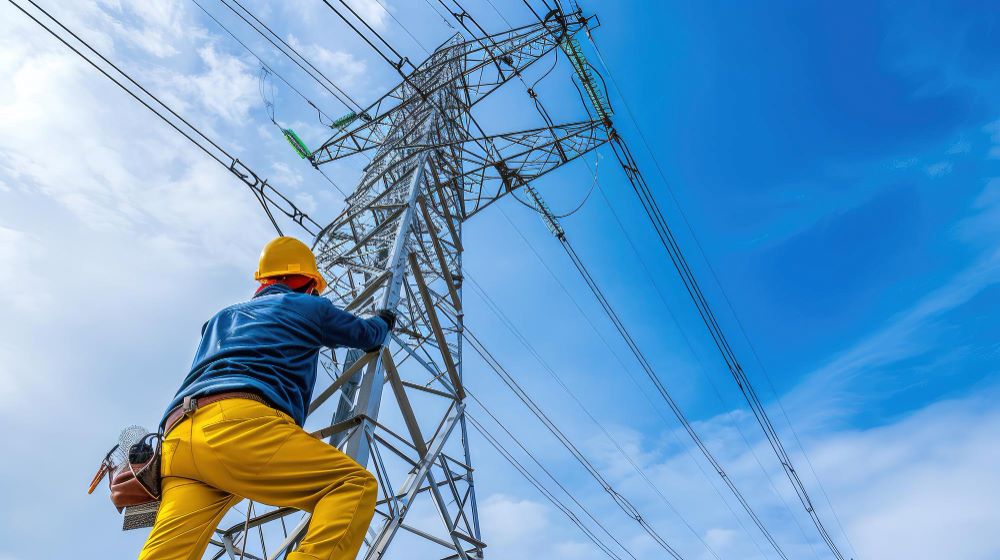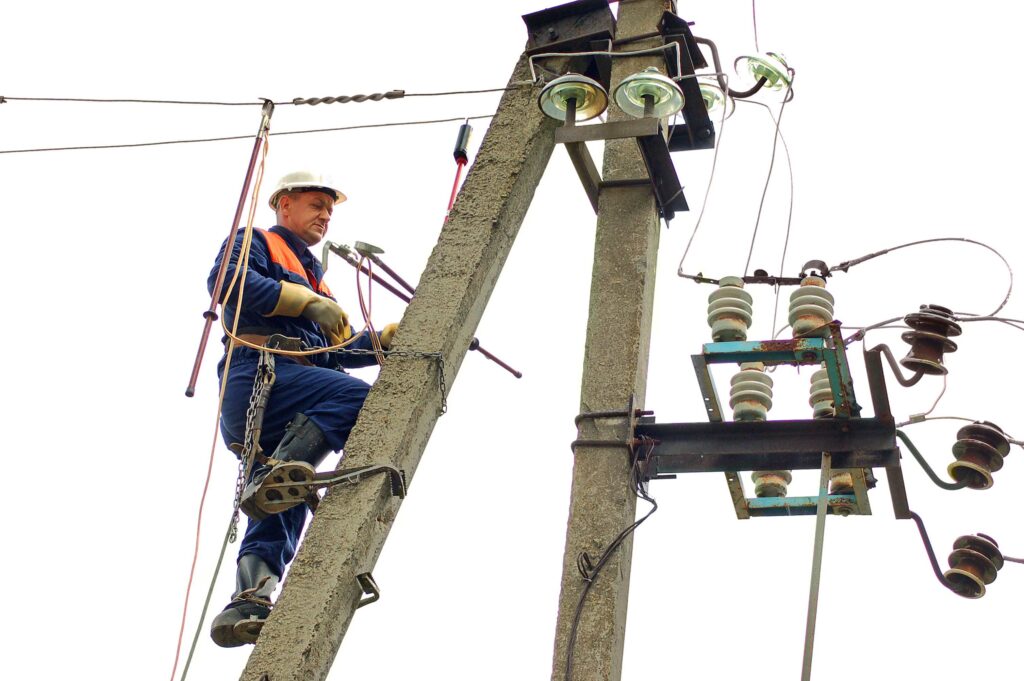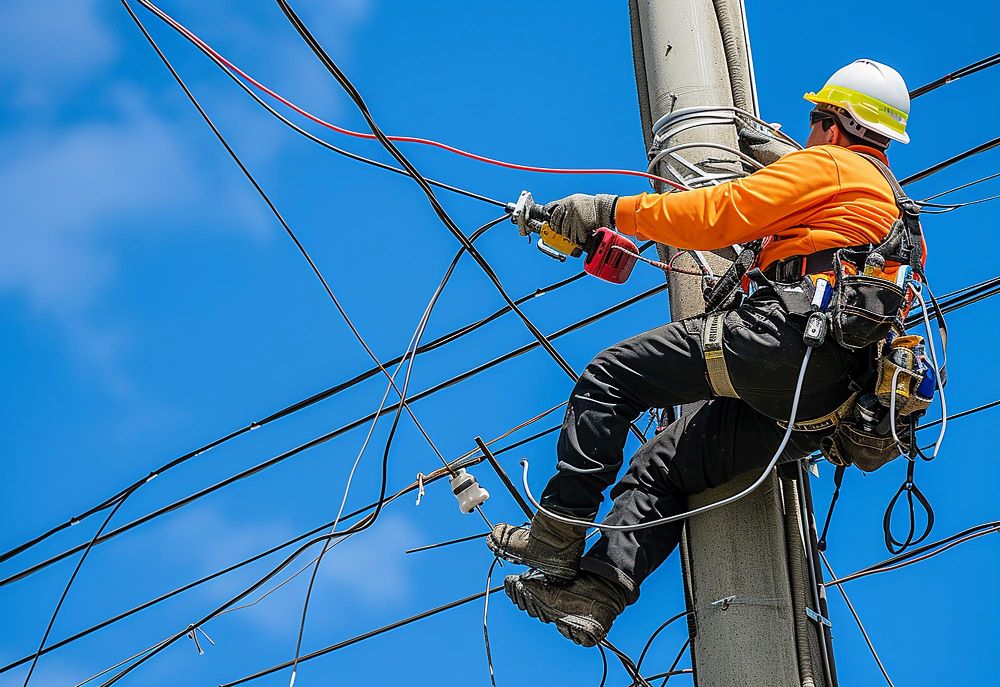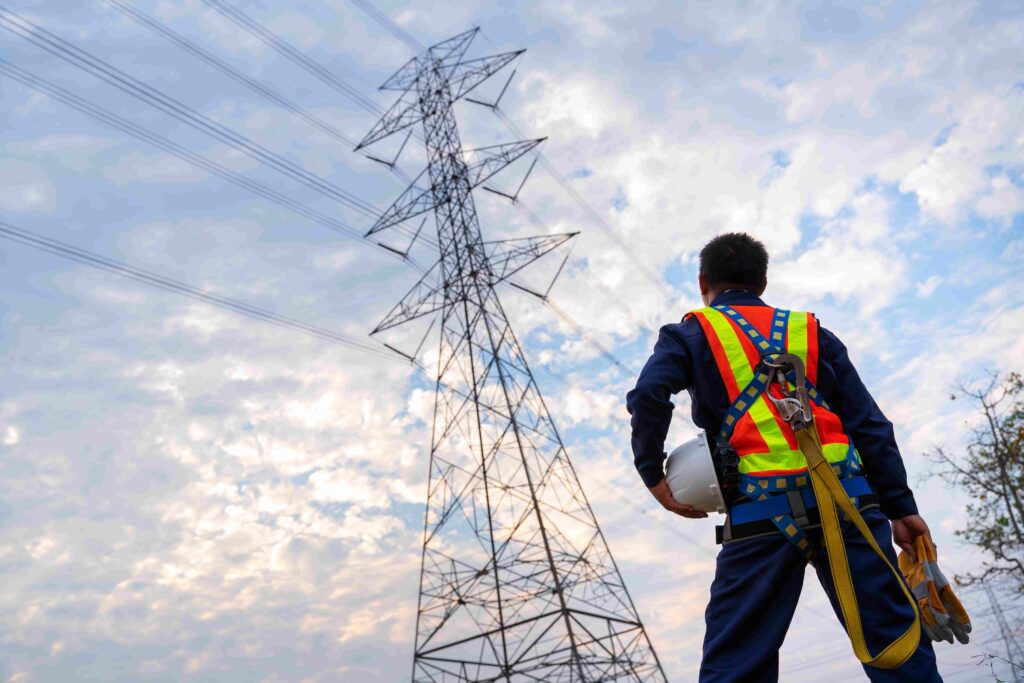The average salary for a High Voltage Aerial Lineman in the United States is around $70,000 annually. Experience, location, and employer can significantly affect earnings.
A High Voltage Aerial Lineman plays a crucial role in the electrical power industry. These skilled workers specialize in installing, maintaining, and repairing high-voltage transmission lines, often working at great heights with utmost precision and safety. Their job is not only physically demanding but also requires a high level of technical knowledge and adherence to strict safety protocols.
As the world increasingly relies on stable electricity supply, the demand for proficient aerial linemen remains strong. The job offers a competitive salary that often reflects the level of skill and the inherent risks associated with the work. The position may also include benefits such as health insurance, retirement plans, and potential overtime pay, making it a lucrative career choice for those interested in the field.
Job Role And Responsibilities
Becoming a High Voltage Aerial Lineman involves tasks that are both challenging and critical. These professionals work tirelessly to ensure that power lines are maintained, repaired, and installed correctly. They perform a variety of complex duties, which require strict adherence to safety protocols and a high level of technical skills. Let’s delve into the typical daily tasks and safety measures that are fundamental to the role of these unsung heroes.
Daily Tasks
High Voltage Aerial Linemen start their day with a focus on what keeps our cities powered. Below are their key daily activities:
- Inspecting equipment before heading to the site ensures their tools are reliable.
- They climb power poles or use cherry-pickers to reach high places.
- Assessing and maintaining power lines prevents outages and hazards.
- Replacing damaged components keeps the electrical grid in top condition.
- Collaborating with team members promotes efficiency and precision.
- They follow blueprints and diagrams for new installations.
- Communicating with dispatchers keeps operations smooth and coordinated.
Safety Measures
For High Voltage Aerial Linemen, safety is always top of mind. Their job requires them to work with potentially dangerous high voltages. Hence, following these safety protocols is a must:
- Thoroughly wearing protective gear like helmets, gloves, and boots is mandatory.
- Regular safety training sessions keep their knowledge up-to-date.
- Adhering to OSHA standards ensures a safe work environment.
- They must use insulating tools to prevent electrical shocks.
- Properly securing themselves with harnesses avoids falls from high heights.
- Conducting risk assessments prior to any job minimizes potential dangers.
- Checking for weather conditions dictates the safest times to work outdoors.
Training And Qualifications
If you dream of powering communities by working high above the ground, focusing on becoming a High Voltage Aerial Lineman could be your calling. But before you climb those poles, rigorous training and stringent qualifications must be met. Knowledge and safety go hand-in-hand in this high-flying profession. Let’s electrify your understanding of what it takes to gear up for this challenging career.

Education
Earning a high school diploma or GED is the starting point for aspiring linemen. Further educational groundwork typically involves enrolling in a technical college or vocational school. Here, courses in electrical technology lay the foundation. A strong emphasis on math, physics, and electrical fundamentals is vital to advance.
Certifications
Certifications propel your qualifications and assure employers of your expertise. Common certifications include:
- OSHA Safety Certifications – Essential for understanding on-the-job hazards.
- CDL (Commercial Driver’s License) – Often required to operate lineman trucks.
- Certified Lineman Training – Provided by trade schools or apprenticeship programs.
Passing rigorous certification exams proves proficiency and bolsters safety and knowledge in the field.
Salary Overview
Exploring the heights of financial prospects in the life of a high voltage aerial lineman brings about an electric array of numbers. These operatives balance risk and skill, dangling at dizzying heights to ensure our lights stay on. Let’s plug into their salary world.
Average Pay Scale
The average pay scale for high voltage aerial linemen maps out a landscape of diverse figures. Salaries hinge on various elements such as experience, location, and certifications. According to industry data, entry-level positions spark salaries around $50,000 annually, while seasoned pros can high-wire their way to over $100,000 per year.
Factors Affecting Salary
- Experience: More years in the field can mean higher pay.
- Location: Salaries surge in areas with higher living costs.
- Certifications: Additional qualifications can boost income.
- Employer: Pay varies with different companies and sectors.
- Overtime: A significant portion of income can come from overtime work.
Industry Demand
The industry demand for High Voltage Aerial Linemen is soaring. An increase in infrastructure projects and power grid updates demand skilled professionals. This demand means a career as a High Voltage Aerial Lineman could offer stability and a lucrative salary.
Job Growth
With the world’s ever-increasing need for energy, the electric power industry is expanding. Data projects significant job growth for High Voltage Aerial Linemen in the coming years. This growth is bolstered by the surge in renewable energy projects and the need for modernizing the grid.
Employment Opportunities
Opportunities for High Voltage Aerial Linemen are plentiful. Industries like power generation and telecommunications are on the hunt for qualified linemen. Federal and state initiatives in infrastructure also fuel demand. Jobs are available across the country, with some regions offering premium pay rates due to acute shortage.
| Region | Job Openings | Average Salary |
|---|---|---|
| West Coast | High | $70,000-$90,000 |
| East Coast | Moderate | $60,000-$80,000 |
| Midwest | Emerging | $55,000-$75,000 |
These figures showcase just a sample of the employment landscape for this high-demand profession. Regions with severe weather conditions, like the Gulf Coast, often need more linemen for storm recovery, thus further increasing job availability.
Benefits And Perks
Exploring a career as a High Voltage Aerial Lineman uncovers a wealth of benefits and perks. Beyond a competitive salary, lineman can expect comprehensive insurance coverage and solid retirement plans. These advantages enhance job satisfaction and ensure long-term financial security.
Insurance Coverage
High Voltage Aerial Lineman roles often come with an impressive insurance package. This not only gives peace of mind but also signals the industry’s commitment to their well-being. Let’s break down the typical offerings:
- Health Insurance: Access to top-tier health plans keeps linemen and their families healthy.
- Dental and Vision: Specialized care for teeth and eyes, ensuring all-around medical attention.
- Life Insurance: Financial support for families in the most challenging times.
- Disability Insurance: Protection against lost income due to short or long-term disability.
Retirement Plans
Planning for retirement is key, and for High Voltage Aerial Linemen, the options are both lucrative and reassuring. Employers typically offer:
- 401(k) Plans: With company matching, linemen can grow their retirement savings faster.
- Pension Plans: Guaranteed income after years of service is a rare and valuable benefit.
- Investment Opportunities: Options to invest in stocks or funds aid in building a robust nest egg.
Challenges Faced
High Voltage Aerial Linemen tackle tough challenges daily. These experts ensure power keeps flowing. But their high salaries come with big obstacles. Let’s explore these hurdles.
Work Environment
Tall towers and live wires define their office. Aerial linemen brave heights and harsh weather. Even the calmest days bring risks. Safety is key in this high-stakes sky dance.
Physical Demands
Muscle and might are linemen essentials. They climb, lift, and fix for long periods. Constant alertness mixes with physical strain. It’s a role for the robust and resilient.
- Climbing: Linemen scale great heights. It’s part of the job.
- Carrying: Heavy gear is their constant companion.
- Balancing: They perform precise work way up high.
- Stamina: Days are long and demanding.
Busy days and risky tasks mark the lineman’s career. Yet, these heroes of the high wires stand tall. Their salaries reflect their vital, valorous work.
Comparison With Related Fields
When considering a career as a High Voltage Aerial Lineman, it’s smart to look at similar jobs. Let’s see how this position stacks up against others in pay.
Similar Professions
High Voltage Aerial Linemen share the skies with other workers. These include Electricians, Tree Trimmers, and Telecom Technicians. All climb high to keep our lights on and phones working.
- Electricians wire buildings and fix electrical issues.
- Tree Trimmers cut branches near power lines.
- Telecom Technicians install internet and cable services.
Salary Variations
Our heroes in hard hats don’t all earn the same. Several factors tilt the salary balance. Experience, location, and job demand play a big role.
| Job Title | Entry-Level | Mid-Career | Experienced |
|---|---|---|---|
| High Voltage Aerial Lineman | $40,000 | $60,000 | $75,000+ |
| Electrician | $35,000 | $52,000 | $65,000 |
| Tree Trimmer | $30,000 | $45,000 | $55,000 |
| Telecom Technician | $35,000 | $50,000 | $65,000 |
In summary, High Voltage Aerial Linemen have a higher financial peak to aim for. They outearn similar trades, especially as they gather more experience.

Future Trends
The field of high voltage aerial linemen is buzzing with innovation. Salaries will likely reflect emerging trends as the field advances. Professionals must adapt to stay competitive. As we explore the future of this electrifying career, two significant factors emerge: technological advancements and changing skill requirements.
Technological Advancements
The deployment of cutting-edge technology is reshaping the industry. Here’s how:
- Drones for line inspection reduce risks and increase efficiency.
- Smart grid technologies demand more tech-savvy linemen.
- Automation and robotics may lead to newer support roles with better pay.
Such innovations potentially lead to upsurged wages for those who can master new tools and processes.
Skill Requirements
As technology progresses, high voltage aerial linemen need a new set of skills:
| Current Skills | Future Skills |
|---|---|
| Electrical Knowledge | Advanced System Troubleshooting |
| Physical Strength | Agility with Tech Devices |
| Safety Compliance | Cybersecurity Awareness |
Adaptability to these skills could directly lead to higher pay scales.

Frequently Asked Questions For High Voltage Aerial Lineman Salary
What Is The Highest Paid Power Lineman?
The highest-paid power lineman are typically those with extensive experience, specialized skills, or in managerial positions, often exceeding $100,000 annually. Their pay can vary by region and employer.
How Much Do Aerial Lineman Make In The Us?
Aerial linemen in the US typically earn between $50,000 and $100,000 annually, depending on experience, location, and employer.
What Does An Aerial Lineman Do?
An aerial lineman installs and repairs electrical power and telecommunications lines above ground. They ensure proper functioning and maintenance of the infrastructure, working on utility poles and towers.
Do Lineman Make 6 Figures?
Some linemen, especially those with extensive experience or overtime opportunities, can earn a six-figure salary. Factors such as location, company, and level of expertise influence income.
Conclusion
Understanding the earnings of high voltage aerial linemen can shape career decisions. With competitive salaries reflecting the risks and skills required, it’s clear why this field is respected. Aspiring linemen must weigh these factors with job demand. This challenging career promises financial stability for those ready to soar.


